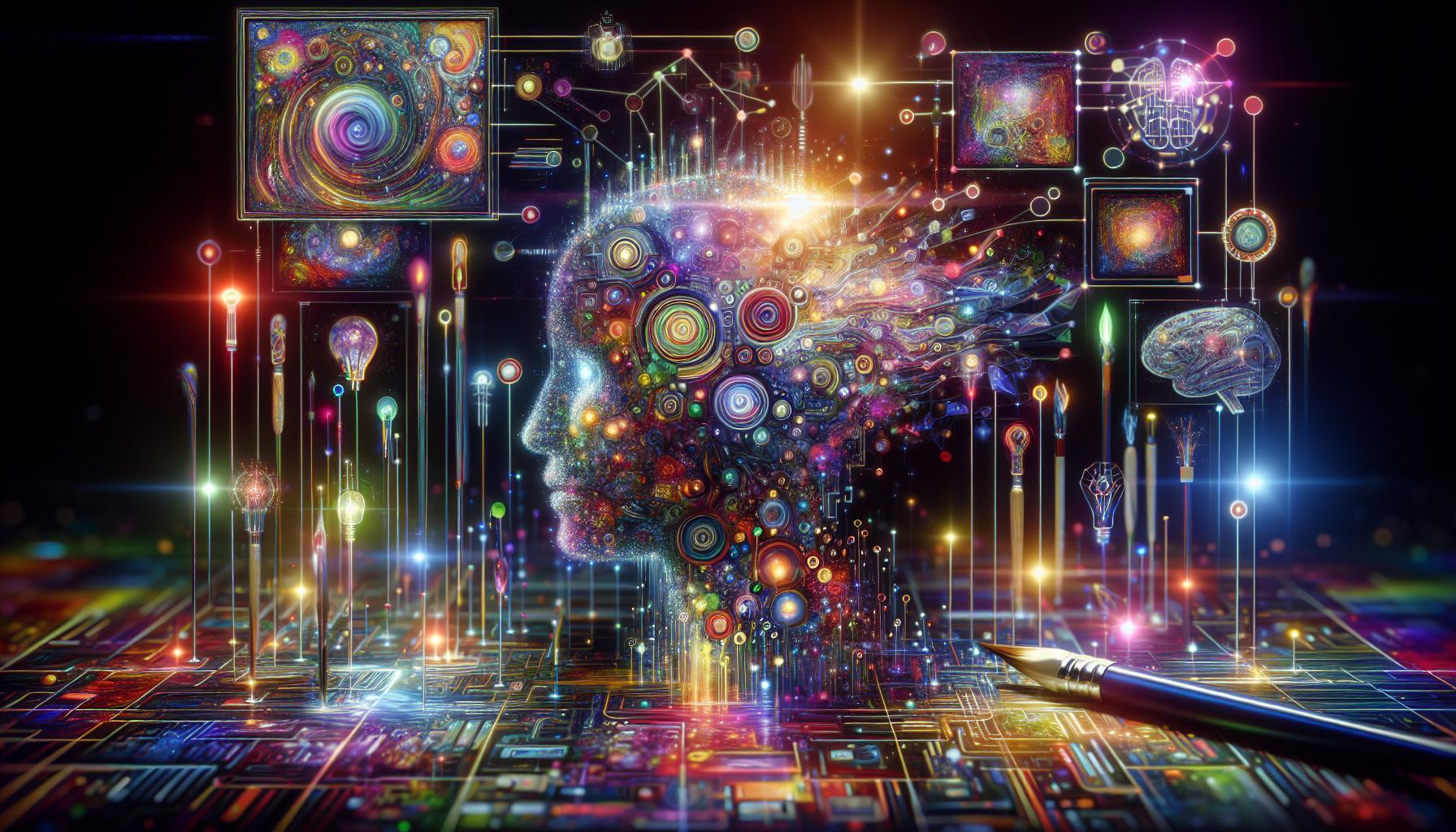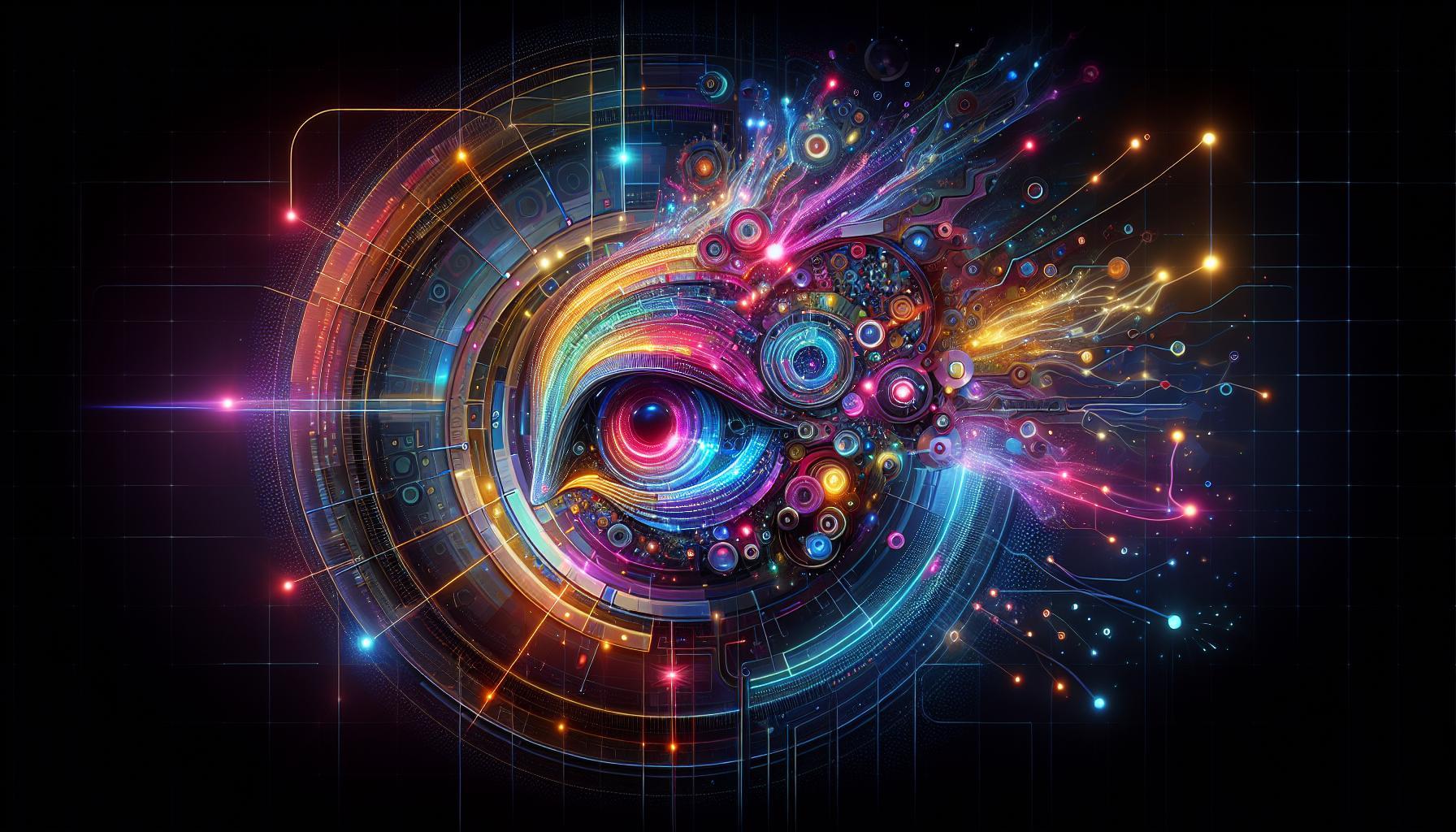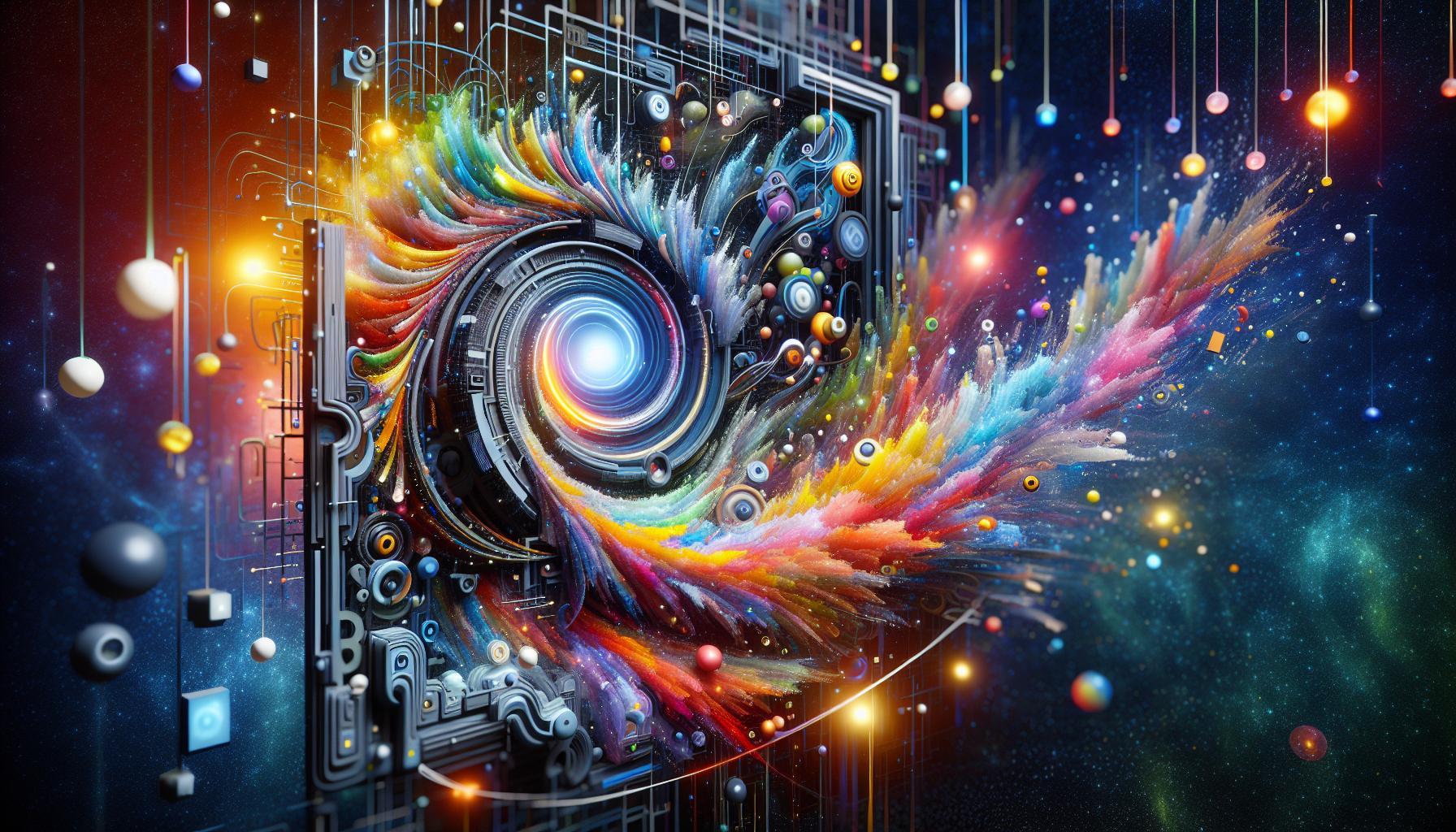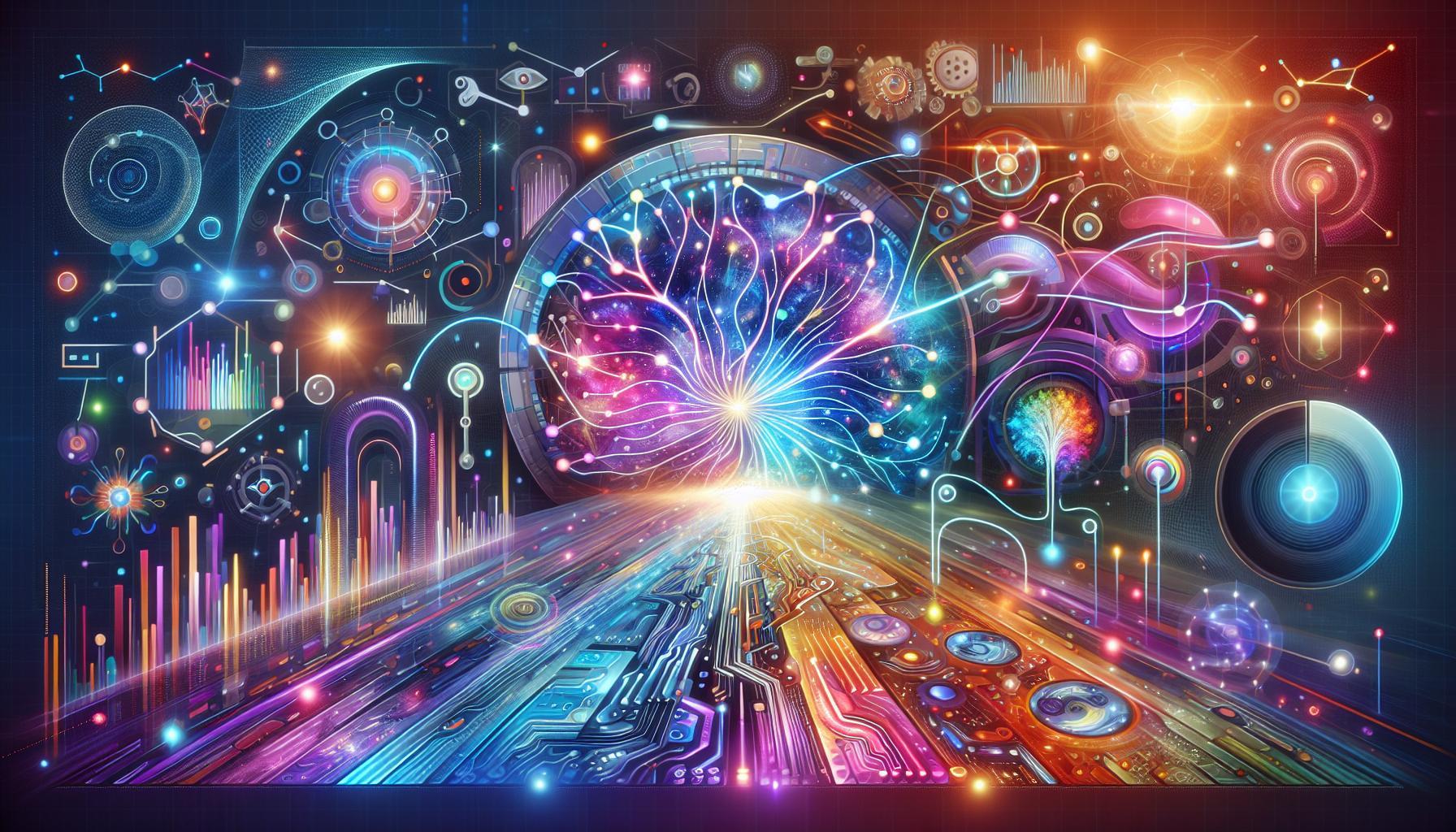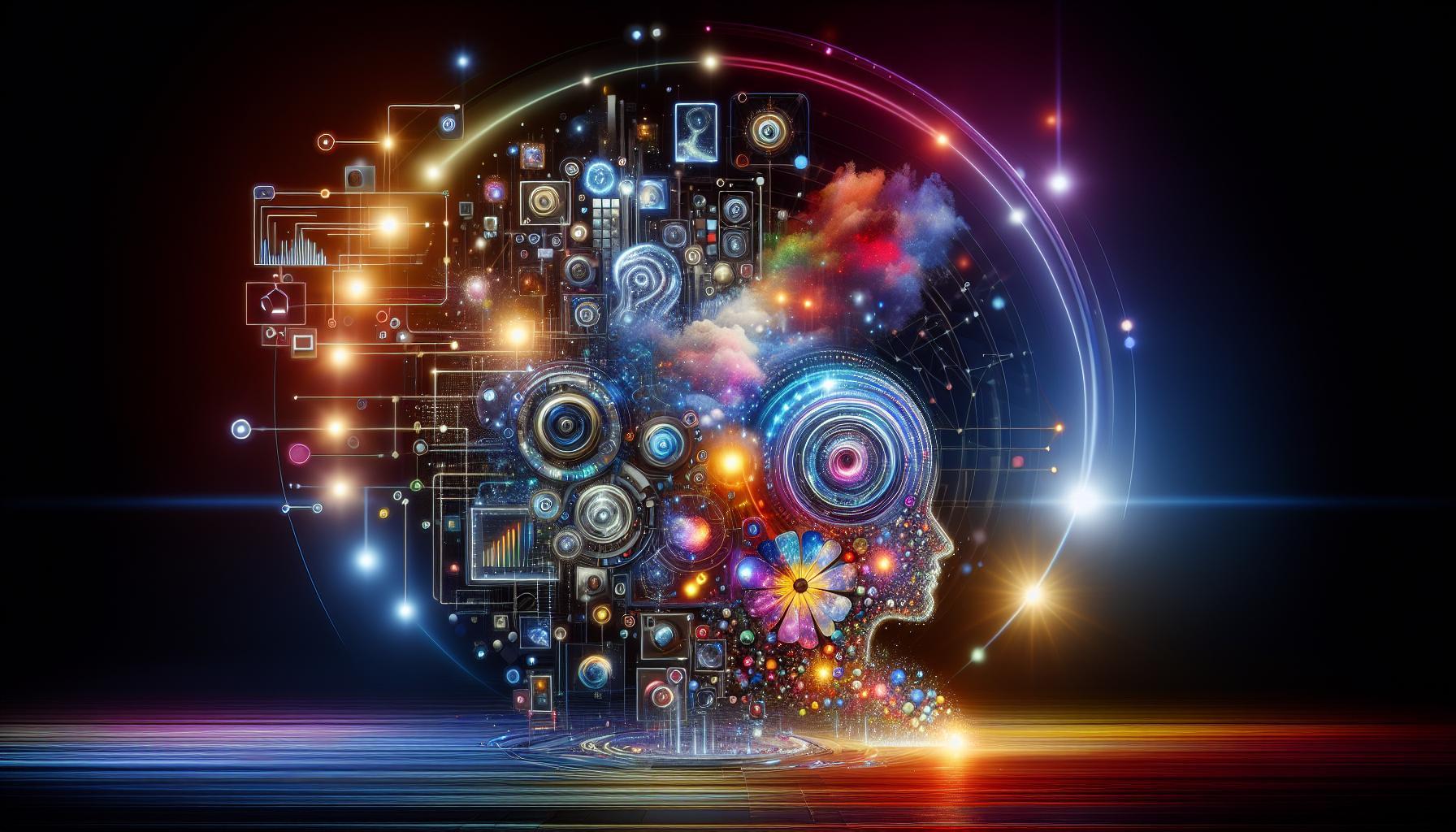Struggling to achieve the perfect visual output in Midjourney? Utilizing reference images effectively can transform your creative process, unlocking new levels of detail and inspiration. This guide will explore essential techniques for harnessing reference images, enhancing your art generation skills, and maximizing your results like a seasoned pro.
Understanding the Role of Reference Images in AI Art Creation
The integration of reference images into AI art creation marks a transformative step in the artistic process, bridging the gap between human creativity and machine learning capabilities. Aspiring digital artists using Midjourney can significantly enhance their artwork’s quality and relevance by employing well-chosen reference images. This playful fusion leads to not only visually engaging pieces but also fosters an enriched learning experience for artists seeking to refine their skills.
Why Reference Images Matter
One of the primary advantages of utilizing reference images is their ability to ground creative ideas in reality. This grounding serves several essentials in the art creation process, including:
- Inspiration: Reference images can stimulate new ideas and provoke innovative thinking, providing artists with a visual prompt that may lead to unexpected creative pathways.
- Accuracy: By studying details in reference images, artists can capture intricate elements such as anatomy, lighting, and texture, bringing a higher degree of realism to their digital creations.
- Composition Guidance: Understanding spatial relationships and composition in reference images allows artists to create more balanced and engaging works.
- Skill Development: Analyzing the techniques used in reference images can greatly inform and improve an artist’s skill set, leading to progressive development over time.
Effective Use of Reference Images in Midjourney
When it comes to applying reference images within Midjourney, strategic selection and integration are key. Here are some actionable steps to ensure you utilize reference images like a pro:
- Curate Your References: Choose images that reflect the style or concept you wish to explore. Consider variations in color palette, mood, and subject matter to cover a broad range of ideas.
- Analyze Before You Render: Take time to analyze your reference images for specific elements you want to incorporate, such as pose dynamics or stylistic choices.
- Incorporate with Intent: When inputting your reference images into Midjourney, clearly articulate what aspects of the image you’d like the AI to focus on, providing context to avoid confusion in interpretation.
For example, if you wish to create a sci-fi landscape, pairing a futuristic cityscape photo with a natural setting can yield stunning juxtaposition, lending depth to the final artwork.
Sample Reference Image Selection Table
| Reference Image Type | Purpose | Best Practices |
|---|---|---|
| Figures | Learn about anatomy and movement | Select various angles and poses |
| Landscapes | Inspire environmental elements | Focus on lighting and texture |
| Art Style Samples | Understand different artistic techniques | Mix and match styles for diverse outcomes |
By applying these insights and approaches, artists can master the art of using reference images in Midjourney to enhance creativity and produce exceptional finished works. The combination of thoughtful image selection and a grounded perspective not only accelerates the learning curve but also results in stimulating visual narratives.
Selecting the Right Reference Images: Tips for Success
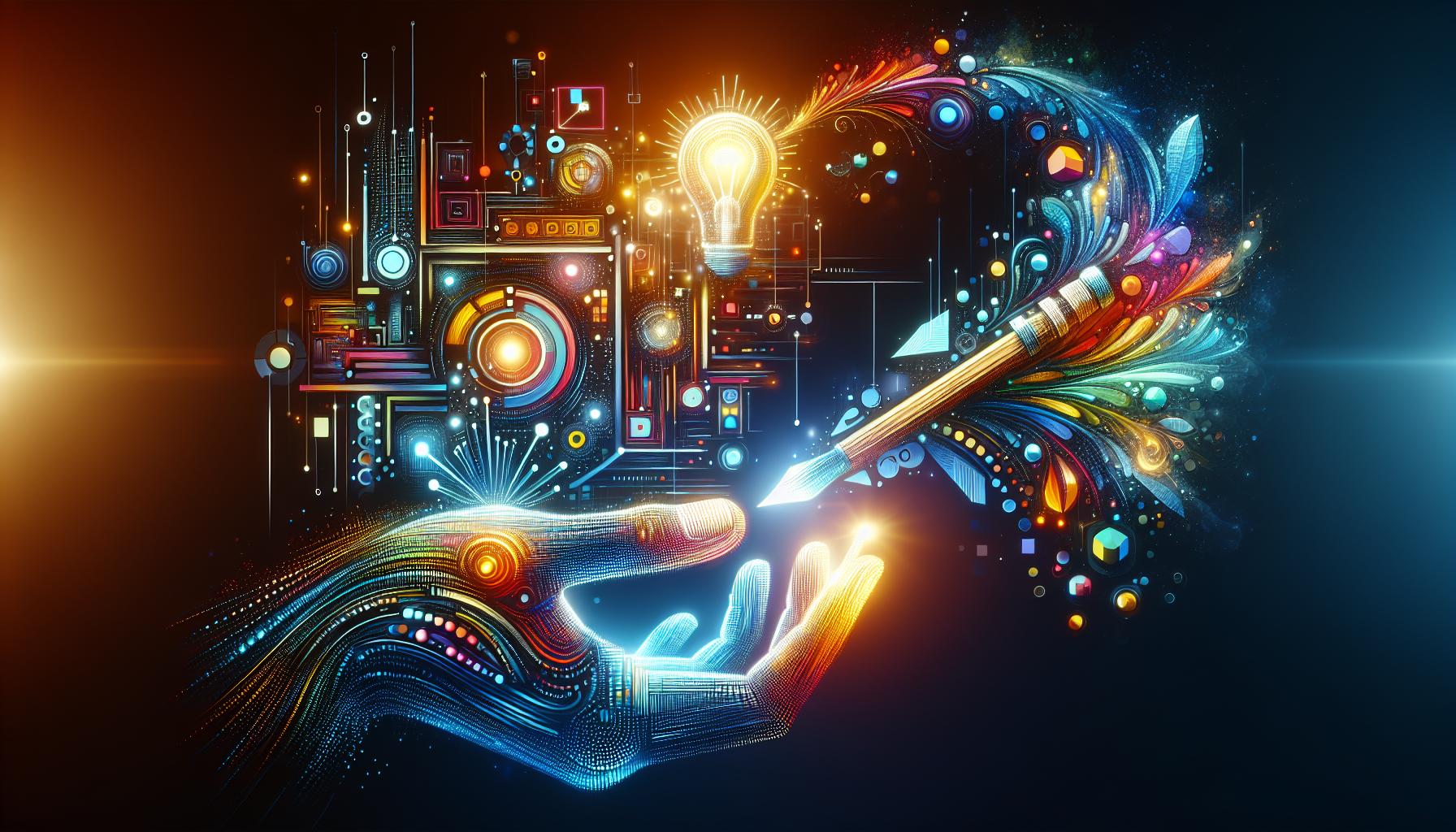
When embarking on a creative project, the right reference image can serve as your compass, guiding every brushstroke, pixel, or design choice you make. In the expansive world of Midjourney, where the interplay of imagination and technology creates stunning visuals, selecting effective reference images becomes a pivotal step to harnessing the platform’s full potential. Not only do strong references provide clarity and inspiration, but they also help in communicating your vision effectively, ensuring your artistic goals align with the final output.
Identify Your Purpose
Before diving into a pool of images, clearly define what you intend to achieve. Are you aiming for a certain mood, a specific style, or perhaps a complex scene composition? Tailoring your search based on your objectives will save you time and enhance your results. For example:
- For Character Design: Look for images that showcase poses, expressions, and clothing relevant to the character you envision.
- For Landscapes: Seek out images that capture the lighting, colors, and atmospheric qualities you want to replicate.
- For Abstract Concepts: Use artworks that embody the feelings or themes you wish to explore, focusing on emotion rather than literal representation.
Quality over Quantity
When amassing reference images, it’s easy to get overwhelmed by vast amounts of data. However, adopting a less-is-more philosophy can lead to more focused and cohesive artwork. Prioritize high-quality, high-resolution images that provide clear details. Look for images that showcase intricate elements relevant to your project. Consider creating a table to categorize your references based on criteria like clarity, color palette, and relevance.
| Image Title | Category | Clarity | Color Palette | Relevance |
|---|---|---|---|---|
| Sunset Horizon | Landscape | High | Warm tones | Directly relevant |
| Fantasy Armor | Character | High | Cool tones | Highly relevant |
| Emotional Abstract | Concept | Medium | Varied | Moderately relevant |
Utilize Diverse Sources
Drawing inspiration from a wide array of sources can enrich your creative process. Don’t limit yourself to traditional art; explore photography, graphic design, and even films. Websites like Unsplash, Pexels, and ArtStation are treasure troves of high-quality images tailored for various styles and themes. Mixing different artistic influences can lead to unique outcomes and help you cultivate a distinctive visual language in Midjourney.
By approaching the selection of reference images with intention and variety, you’re not just choosing visuals but crafting an artistic lexicon that speaks to your vision, ensuring that your creative endeavors in Midjourney are executed with precision and flair.
Step-by-Step Guide: Uploading and Utilizing Reference Images in Midjourney
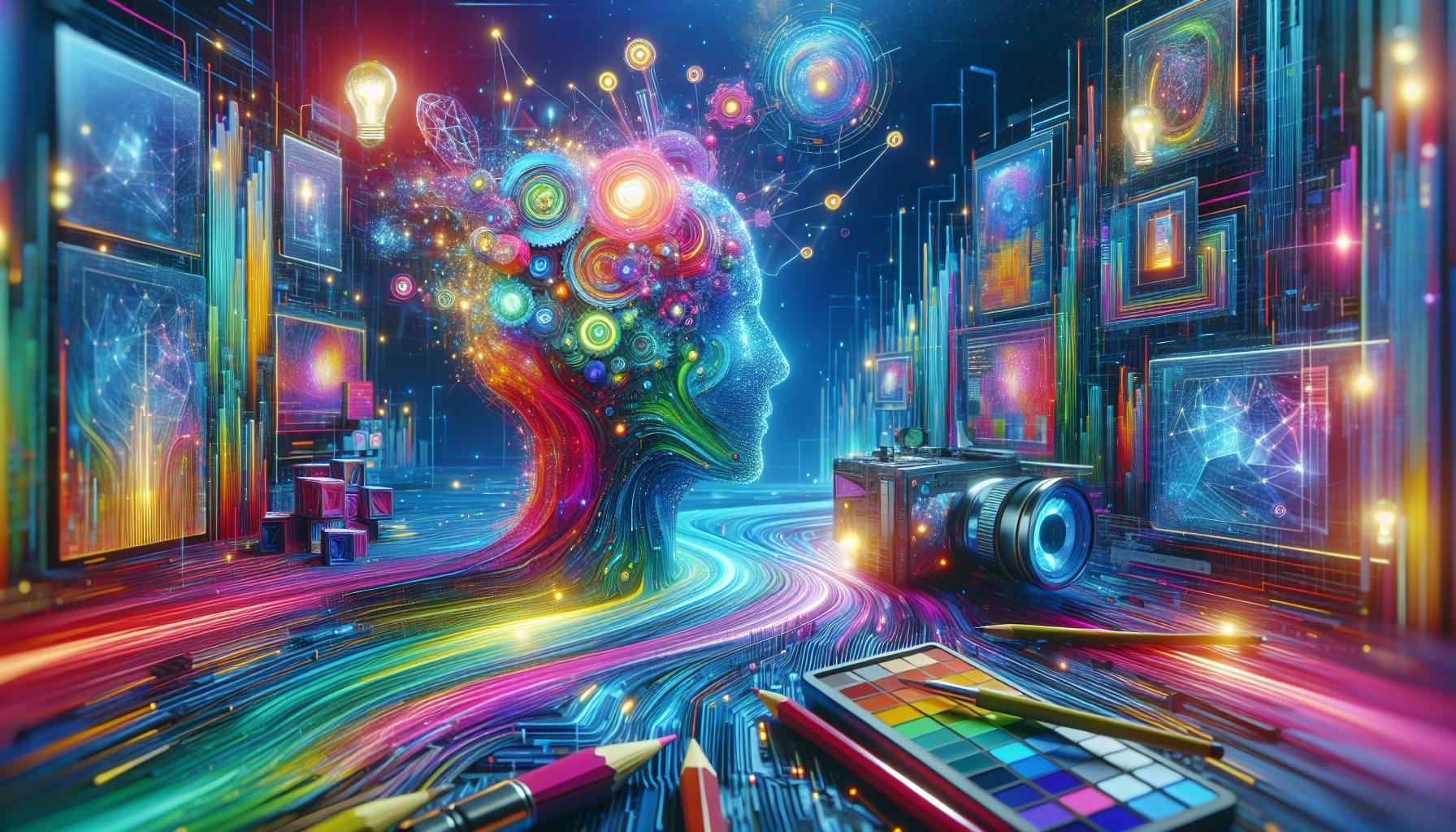
Utilizing reference images in Midjourney can elevate your creative projects significantly, allowing you to add depth and authenticity to your AI-generated imagery. Before you dive into the intricacies of use, it’s essential to understand the basic steps involved in uploading and leveraging these visuals effectively.
Preparing Your Reference Images
Before you can get started, ensure that your reference images meet some basic criteria. The quality and clarity of the images can directly influence the output from Midjourney. Here are some points to consider when selecting your references:
- High Resolution: Choose images with high resolution to prevent loss of detail.
- Clear Subject: Ensure the main focus of the image is distinct and easily recognizable.
- Proper Format: Use common file formats like JPEG or PNG for compatibility.
- Relevance: Select images that represent the style, mood, or detail you wish to capture in your generated content.
Uploading Reference Images
Once your images are ready, uploading them to Midjourney involves a straightforward yet effective process:
- Access the Platform: Open the Midjourney interface via Discord or the Midjourney website.
- Upload Your Image: Drag and drop your reference image into the chat window or click the ‘+’ icon to upload the file directly.
- Copy the Image Link: After uploading, right-click on your image and select ‘Copy Link.’ This enables you to use the image in your commands.
After you have uploaded the image, it’s crucial to integrate it into your prompts effectively. This can significantly influence the generated outcome and ensure that your imagery remains consistent with your artistic vision.
Using Reference Images in Your Prompts
Integrating your reference images into Midjourney prompts requires a strategic approach. Here’s how to do it:
- Constructing Your Prompt: Begin your command with the copied link of your reference image, followed by a descriptive prompt that outlines your creative intent. For example:
/imagine [image_link] a serene landscape, bright colors, with a whimsical touch. - Incorporate Style Descriptors: Add adjectives and stylistic choices to fine-tune the AI’s interpretation based on the reference image. Use terms such as ‘vibrant,’ ‘surreal,’ or ‘realistic’ to communicate your vision.
- Experiment and Adjust: After generating your first set of images, don’t hesitate to revise your prompts or images to achieve different styles or details. Iteration is key in perfecting your final results.
Utilizing these steps will not only help in crafting impressive images but also streamline your workflow within Midjourney. As you become accustomed to incorporating reference images into your designs, you’ll find ways to adapt your strategies for ever more innovative creations.
Enhancing Your Prompts: Combining Text and Reference Images Effectively
Mastering the art of prompt crafting in Midjourney involves more than just text; incorporating reference images can transform your creative visions into reality. By pairing your textual prompts with visuals, you can provide context that enhances understanding, leading to more accurate and compelling outputs. This combination is not merely a case of “show and tell” but a sophisticated technique that allows you to instruct the AI effectively, thus elevating your art and design process.
Understanding the Power of Visual References
Visual references serve as a vital link between your ideas and the AI’s interpretation. They help clarify complex concepts or convey specific styles that might be challenging to explain with words alone. For instance, if you’re looking to create a gothic-themed art piece, a simple text prompt might not suffice. However, when you pair it with an image that visually embodies gothic architecture or fashion, the AI gains a clearer direction, improving the chances of achieving the desired aesthetic.
Using reference images effectively involves a few critical steps:
- Choose High-Quality Images: Ensure your visuals are clear and represent the nuances of what you want to create.
- Contextualize Your Prompt: Include descriptive text in your prompt that complements the reference image, enhancing the AI’s understanding.
- Experiment with Variations: Don’t hesitate to test different images and text combinations to discover what works best for your project.
Practical Example: Crafting a Scene
Consider you want to illustrate a serene beach scene at sunset. Your prompt might read: “a tranquil beach with soft waves under a vibrant sunset sky.” To amplify this, you could upload a reference image that captures the colors of the sunset or the precise type of shoreline you envision. The combination of your prompt and the reference image offers the AI a dual source of inspiration, increasing the likelihood of generating a scene that meets your artistic goals.
| Text Prompt | Reference Image | Expected Outcome |
|---|---|---|
| a tranquil beach at sunset |  |
A serene beach scene with vibrant sunset colors and gentle waves. |
| futuristic city skyline at night |  |
A bustling, neon-lit metropolis with imaginative architecture. |
By understanding and implementing these strategies, you can become adept at using reference images in Midjourney, enhancing your prompts to yield more satisfying results. This synergy between images and text can significantly improve your creative outcomes, making your artistic process both efficient and fulfilling.
Exploring Different Styles and Techniques with Reference Imagery
To elevate your artwork and make the most of Midjourney’s capabilities, understanding various artistic styles and techniques is crucial. By exploring diverse reference imagery, you can better express your creative vision and produce stunning results that stand out. The right references can guide your interpretation of light, form, color, and texture, allowing you to imitate or innovate upon established styles.
Understanding Different Styles
Art is a language of its own, rich with distinct styles that communicate emotions and ideas. To harness these styles effectively, first familiarize yourself with various genres including but not limited to:
- Abstract – Focus on color, shapes, and forms rather than realistic representation.
- Realism – Aims to depict subjects as they appear in life, emphasizing detail and accuracy.
- Surrealism – Merges dreamlike imagery with the unexpected to challenge perceptions.
- Impressionism – Utilizes loose brushwork and vibrant colors to convey the essence of a moment.
By dissecting these styles, you can choose reference images that align with your artistic intentions. For instance, if you aim to create an impressionistic piece in Midjourney, studying works by Monet or Renoir can serve as an excellent foundation for understanding light and color play.
Techniques to Implement
While styles provide a framework, techniques bring the artwork to life. Here are some practical tips for utilizing reference imagery effectively:
- Analyze Composition: When selecting reference images, pay close attention to the composition. Notice how the elements are arranged within the frame and how this guides the viewer’s eye.
- Study Color Palettes: Color is a powerful tool in art. Examine your reference images to determine color relationships and harmonies. You can utilize digital tools to extract color palettes directly from your references.
- Emulate Textures: Different styles utilize texture in unique ways. Whether it’s the thick application of paint in impasto techniques or the smooth gradients found in digital art, identifying and experimenting with various textures will elevate your work.
- Incorporate Lighting Techniques: Lighting can dramatically alter the mood of your artwork. Use reference images to study how light interacts with subjects at different times of day and under various conditions, enhancing the depth and realism of your pieces.
| Technique | Description | References to Explore |
|---|---|---|
| Composition Analysis | Understanding element placement and focus | Classic paintings and contemporary layouts |
| Color Palette Extraction | Creating harmony and contrast through color | Nature photography or modern graphic designs |
| Texture Study | Experimenting with different surface effects | Artworks from the Baroque and Abstract movements |
| Lighting Techniques | Exploring shadows and highlights | Photography and cinematic stills |
By diving deep into these styles and techniques with reference imagery, you can unlock new creative possibilities in your Midjourney creations. Remember, the key is to observe, analyze, and practice; through this process, you will learn how to manipulate these elements to enhance your artistic voice.
Common Pitfalls to Avoid When Using Reference Images in Midjourney
When leveraging reference images in Midjourney, the potential to enhance your creativity and produce stunning visuals is immense. However, navigating this landscape is fraught with challenges that can derail even the most promising projects. Recognizing and avoiding these common pitfalls can save you time, refine your process, and elevate the quality of your creations.
Inadequate Image Selection
One of the most frequent mistakes involves choosing the wrong reference images. Not all images will work effectively in Midjourney. Ensure that your selected images align closely with your intended outcome. This means considering not just the aesthetic elements but also the context and style of the reference. For instance, if you are creating a futuristic cityscape, using a reference photo of a rustic landscape can lead to jarring results. Strive for coherence in style and theme to optimize your results.
Over-Relying on References
While reference images can significantly inform your work, relying on them too heavily can stifle creativity and result in derivative designs. It’s essential to maintain a balance between inspiration and originality. Use references as a springboard rather than a crutch. Experiment by combining elements from different images or altering aspects of your references to create a unique vision. This not only enhances your artistic voice but also encourages innovative thinking.
Ignoring Aspect Ratios and Resolution
Another common mistake is neglecting the aspect ratio and resolution of your reference images. Using images that do not match Midjourney’s recommended dimensions may lead to unwanted cropping or distortion in your output. Adhere to appropriate dimensions to ensure that your reference images seamlessly integrate into the overall composition. A good rule of thumb is to utilize high-resolution images that fit the desired format, which will translate better into the final artwork.
| Common Pitfalls | Impact | Solutions |
|---|---|---|
| Inadequate Image Selection | Results in mismatched styles and contexts | Select images that closely match your vision |
| Over-Relying on References | Leads to derivative designs | Balance inspiration with originality |
| Ignoring Aspect Ratios and Resolution | Causes cropping and distortion | Ensure reference images have the right dimensions |
By being mindful of these common pitfalls, you can significantly improve your approach when using reference images in Midjourney. Whether you’re a novice or a seasoned artist, learning how to effectively integrate these visuals will enhance your efficiency and creativity in the platform.
Case Studies: How Artists Leverage Reference Images for Stunning Results
Artists today have a plethora of tools at their disposal, and the incorporation of reference images in Midjourney stands out as a transformative approach. By utilizing reference images effectively, illustrators, graphic designers, and digital artists can elevate their creations to new heights, allowing for a blend of creativity and realism that captivates audiences. Let’s explore some compelling case studies where artists have harnessed the power of reference images to achieve stunning results.
Case Study 1: Urban Landscapes by Anna
Anna, an emerging digital artist, specializes in creating hyper-realistic urban landscapes. To refine her work, she carefully selected reference images that showcased different architectural styles, lighting conditions, and atmospheric effects. Here’s how she structured her process:
- Research and Selection: Anna scoured various photography websites to find images of cities at different times of day and in various weather conditions. This collection provided her with a rich palette of ideas and styles.
- Structuring Composition: Using a mix of these images, she created composite scenarios that captured the essence of a bustling city. The reference images guided her in understanding perspective and scale, enhancing her artwork’s realism.
- Color and Light Analysis: By analyzing the colors and lighting in her reference images, Anna was able to recreate intricate reflections and shadow play, resulting in dynamic visual effects.
Through this method, she produced a series of digital artworks that not only showcased her technical skills but also evoked an emotional connection with viewers, elevating her profile in the online art community.
Case Study 2: Character Design by Mike
Mike, a freelance illustrator known for his character designs, leveraged reference images to create compelling, relatable characters for an upcoming fantasy series. His strategy revolved around these key practices:
- Diverse Reference Pool: Mike collected images ranging from real-life portraits to fantasy art, ensuring a diverse range of expressions and poses. This variety allowed him to blend realism with fantasy seamlessly.
- Emotion and Expression: He used reference images to study facial expressions and body language in different contexts, resulting in characters that felt alive and expressive.
- Style Adaptation: By analyzing various illustration styles, Mike tailored his characters to match the desired aesthetic of the project while maintaining originality.
The final character designs not only captured the essence of the narrative but also showcased Mike’s unique style, drawing attention and potential commissions from game developers and publishers.
Table 1: Key Benefits of Using Reference Images in Midjourney
| Benefit | Description |
|---|---|
| Accuracy | Reference images help in achieving accuracy in proportion, anatomy, and detail. |
| Inspiration | They serve as sources of inspiration, sparking creativity for new ideas and styles. |
| Time Efficiency | Using references can significantly reduce the time spent on corrections and revisions. |
| Learning Tool | Artists can improve their skills by analyzing the techniques and styles portrayed in reference images. |
In conclusion, these case studies illustrate the profound impact that reference images can have on the artistic process in Midjourney. By learning how to use reference images strategically, artists can not only enhance their technical capabilities but also foster a deeper connection with their audience through more authentic and engaging art.
Creative Experimentation: Pushing the Boundaries with Reference Imagery
The creative process is often a dance between inspiration and execution. In the realm of digital art and design, reference imagery serves as a crucial bridge that connects these two phases. By harnessing the power of reference images in Midjourney, artists can unlock new realms of creativity, exploring concepts and styles that may have otherwise remained untouched. The art of using reference imagery not only enhances the quality of the final product but also allows for innovative experimentation, encouraging creators to push the boundaries of their work.
The Role of Reference Imagery in Creative Experimentation
Incorporating reference images into your Midjourney projects is more than just a method for achieving realism; it’s a portal to creative exploration. Here’s how you can leverage reference images to foster experimentation:
- Visual Exploration: Use reference images to explore various artistic styles and techniques. This could range from impressionistic approaches to hyper-realistic depictions, allowing you to see how different styles might reinterpret your ideas.
- Color Schemes: Reference imagery is an excellent way to experiment with color combinations. Picking an image that resonates and using its palette can lead to harmonious and striking results in your projects.
- Composition Techniques: Referencing well-composed works can teach you the nuances of balance and focal points. Analyze how different elements are arranged and apply these techniques in your own creations.
- Texture and Detail: Detail-oriented reference images offer invaluable insights into textures, helping you replicate or manipulate them within your own work.
Practical Steps for Effective Use of Reference Images
To maximize the effectiveness of reference imagery in Midjourney, follow these actionable steps:
- Curate a Diverse Collection: Build a library of reference images that include various styles, moods, and themes. Platforms like Unsplash, Pinterest, or even your photography can serve as a treasure trove of inspiration.
- Experiment with Combinations: Don’t hesitate to combine elements from multiple reference images. This technique can lead to unique results that are a true amalgamation of your vision and inspiration.
- Document Your Process: Keep notes on which reference images produce certain outcomes. This documentation will help you refine your approach and understand the effects different references have on your creative output.
- Iterate with Purpose: Use the feedback from your experiments to iterate your projects. Each piece of feedback, whether from peers or your own observations, should inform your subsequent choices in reference imagery.
Real-World Examples of Creative Experimentation
To better understand the potential of reference imagery in the context of Midjourney, consider a couple of illustrative examples:
| Example | Reference Strategy | Outcome |
|---|---|---|
| Surreal Landscape | Combining elements from various landscapes and fantastical creatures | A unique, dreamlike artwork that merges reality with imagination |
| Character Design | Using references from different cultures and styles | A rich character design that showcases diverse influences and depth |
Using references in imaginative and innovative ways allows artists to significantly enhance their work, leading to fresh, compelling pieces that resonate. By turning to effective strategies for integrating reference imagery in Midjourney, you expand not only your artistic toolkit but also your creative horizon.
Frequently asked questions
How to Use Reference Images in Midjourney Like a Pro?
To use reference images in Midjourney effectively, first upload your desired image, then use the provided link in your prompt. This way, you can guide the AI to create visuals inspired by your reference while retaining your unique stylistic choices.
Reference images are essential because they help the AI understand the desired colors, shapes, and themes. For example, if you’re creating a landscape, uploading a reference photo can ensure the generated image has the right ambiance. Experiment with different images to see varying results, and always try incorporating them with descriptive language in your prompts.
What is a reference image in Midjourney?
A reference image in Midjourney is an existing image that you provide to the AI to influence its output. This could be photos, artworks, or designs that showcase specific themes or styles you’re aiming to replicate.
Using reference images helps create more tailored results. For instance, if you’re generating an artwork inspired by a famous painting, including that painting as a reference image allows Midjourney to incorporate similar colors and brush strokes. Make sure your reference image is clear and relevant to get the best outcomes.
Why does using reference images enhance creativity in Midjourney?
Using reference images enhances creativity in Midjourney by providing a *visual groundwork* for the AI to build upon. It helps guide the creativity instead of leaving it completely open-ended, which can sometimes yield less satisfactory results.
When you include a reference image, *Midjourney* can better interpret nuances like texture, lighting, and composition. This leads to more detailed and inspired outputs. For example, an artist could combine their original vision and the reference image to create something truly unique.
Can I use multiple reference images in Midjourney?
Yes, you can use multiple reference images in Midjourney. You can upload several images and include the links to each in your prompt, allowing the AI to synthesize elements from all the references to generate a cohesive visual.
Combining different references can lead to innovative creations. For instance, merging different architectural styles or even contrasting colors can create surprising yet aesthetically pleasing results. Always ensure that the reference images are consistent in theme to achieve better integration.
How do I upload reference images for Midjourney?
To upload a reference image in Midjourney, go to the platform and use the upload feature to select your image. After uploading, simply copy the image link and paste it into your prompt for Midjourney to access.
This process allows you to share specific details that the AI can consider while generating images. Remember to check the size and resolution of your images; clearer images yield better results. For more tips, refer to our guide on using AI tools effectively.
What are some best practices for using reference images in Midjourney?
Some best practices for using reference images include selecting images that closely align with your desired outcome and ensuring high resolution for clarity. Additionally, combine your image references with descriptive text to provide context.
Consider experimenting with various angles, lighting, and styles to see what works best. Also, don’t hesitate to make adjustments to your prompts as you experiment-keeping notes on what produces optimal results can enhance your future projects.
Can beginners easily use reference images in Midjourney?
Absolutely! Beginners can easily use reference images in Midjourney. The process involves a few straightforward steps: uploading an image, obtaining a link, and including that link in your prompt.
By following this simple workflow, even those new to AI-generated art can create stunning visuals. With practice, you will build a better understanding of how different references influence outcomes, boosting your confidence and creative skills in the process.
To Wrap It Up
In conclusion, mastering the use of reference images in Midjourney empowers you to elevate your creative projects and achieve professional-quality results. By understanding how to select impactful visuals, adjusting for resolution, and exploring the various input techniques, you can harness the full potential of this powerful tool. Remember to experiment with different styles and compositions, as creativity thrives on exploration.
We encourage you to dive deeper into the nuances of AI imaging-perhaps by trying out some of the tips shared in this article or engaging with the Midjourney community for collaborative ideas and feedback. As you continue your journey, let curiosity guide your creative process, and don’t hesitate to push boundaries. The world of AI-generated visuals is at your fingertips-embrace it, create boldly, and share your innovations with others!

